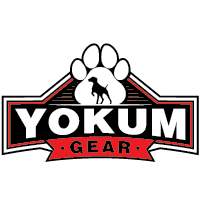Training a dog goes beyond simple obedience; it’s about building a harmonious relationship between you and your canine companion. Whether you are a new dog owner or a seasoned pet parent looking to brush up on advanced techniques, this ultimate guide to masterclass dog training will equip you with the knowledge and skills needed to nurture a well-behaved and happy pet.
Understanding Your Dog’s Behavior
Before diving into training, it’s crucial to understand your dog’s behavior. Dogs communicate primarily through body language, vocalizations, and behavior. By learning to read these signals, you can tailor your training approach effectively. Common signs to observe include tail wagging, ear positioning, and barking patterns. Understanding these cues will help you address any underlying issues and foster a more intuitive training experience.
Setting Realistic Goals
Training your dog requires time, patience, and consistency. Setting realistic goals is essential for both you and your dog. Start with simple commands like “sit,” “stay,” and “come,” before progressing to more advanced training like agility or specialized tasks. Break down each training session into manageable steps, rewarding your dog’s progress regularly to keep them motivated.
Positive Reinforcement Techniques
Positive reinforcement is the cornerstone of effective dog training. This method involves rewarding your dog for good behavior, which encourages them to repeat it. Rewards can include treats, toys, or even verbal praise. The key is to offer the reward immediately after the desired behavior, so your dog associates the action with a positive outcome. Gradually phase out treats as your dog becomes more proficient, substituting with praise and affection.
Essential Commands
Every dog should master some basic commands for safety and control. Here are a few essential commands to start with:
- ”Sit”: This is one of the easiest commands to teach. Hold a treat close to your dog’s nose, then move your hand up to make him sit his bottom on the ground.
- ”Stay”: Start with your dog in the sitting position. Open the palm of your hand in front of you and say “stay.” Take a few steps back and reward if he stays.
- ”Come”: This command is vital for your dog’s safety. Sit with your dog and gently pull on the leash, saying “come.” Reward him when he comes to you.
- ”Leave it”: This helps to prevent your dog from picking up dangerous or unwanted items. Show a treat in one hand and say “leave it.” Reward him with a treat from your other hand once he ignores the first treat.
Advanced Training Techniques
Once your dog has mastered basic commands, you can challenge him with advanced techniques. Agility training is an excellent way to enhance your dog’s physical fitness and mental acuity. Activities such as obstacle courses, fetch, and hide-and-seek can keep your dog engaged and stimulated. For those interested in specialized training, consider disciplines like search and rescue, therapy dog training, or dog sports.
Socialization
Socialization is a critical aspect of dog training, as it teaches your dog to interact appropriately with other animals and humans. Begin socialization early by introducing your dog to different environments, sounds, and people. Puppy classes, dog parks, and supervised playdates are excellent opportunities for socialization. Always monitor interactions and intervene if your dog displays signs of aggression or fear.
Addressing Behavioral Issues
During training, you may encounter behavioral issues such as barking, chewing, or leash pulling. Identify the root cause of the behavior and address it with appropriate training techniques. Consistency is key; ensure all family members follow the same training protocol to prevent confusion. If issues persist, consider consulting a professional dog trainer or veterinarian for personalized advice.
Tools and Equipment
Investing in the right tools and equipment can significantly enhance your training efforts. Here are some essentials:
- Collars and Leashes: Choose a collar and leash suitable for your dog’s size and breed. Harnesses can be an alternative for dogs that pull.
- Treats: Use high-value treats that your dog loves to motivate and reward during training.
- Clickers: Clicker training is an effective method that uses a sound to mark good behavior, followed by a reward.
- Toys: Interactive toys can be used as rewards and to keep your dog mentally stimulated.
Continual Learning and Adaptation
Dog training is a lifelong process. Continue to reinforce commands and introduce new challenges to keep your dog engaged. Stay updated with the latest training techniques and consider enrolling in advanced classes or workshops. Remember, every dog is unique, and what works for one may not work for another. Be patient, adaptable, and always prioritize your dog’s well-being.
With dedication and the right approach, you can master the art of dog training and enjoy a fulfilling and harmonious relationship with your furry friend.

